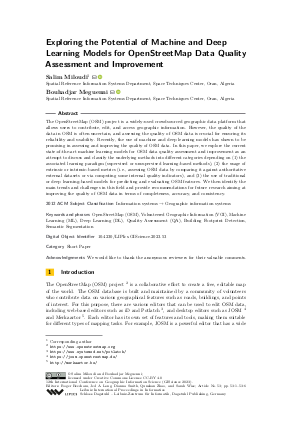@InProceedings{miloudi_et_al:LIPIcs.GIScience.2023.53,
author = {Miloudi, Salim and Meguenni, Bouhadjar},
title = {{Exploring the Potential of Machine and Deep Learning Models for OpenStreetMap Data Quality Assessment and Improvement}},
booktitle = {12th International Conference on Geographic Information Science (GIScience 2023)},
pages = {53:1--53:6},
series = {Leibniz International Proceedings in Informatics (LIPIcs)},
ISBN = {978-3-95977-288-4},
ISSN = {1868-8969},
year = {2023},
volume = {277},
editor = {Beecham, Roger and Long, Jed A. and Smith, Dianna and Zhao, Qunshan and Wise, Sarah},
publisher = {Schloss Dagstuhl -- Leibniz-Zentrum f{\"u}r Informatik},
address = {Dagstuhl, Germany},
URL = {https://drops.dagstuhl.de/entities/document/10.4230/LIPIcs.GIScience.2023.53},
URN = {urn:nbn:de:0030-drops-189486},
doi = {10.4230/LIPIcs.GIScience.2023.53},
annote = {Keywords: OpenStreetMap (OSM), Volunteered Geographic Information (VGI), Machine Learning (ML), Deep Learning (DL), Quality Assessment (QA), Building Footprint Detection, Semantic Segmentation}
}

 Creative Commons Attribution 4.0 International license
Creative Commons Attribution 4.0 International license



